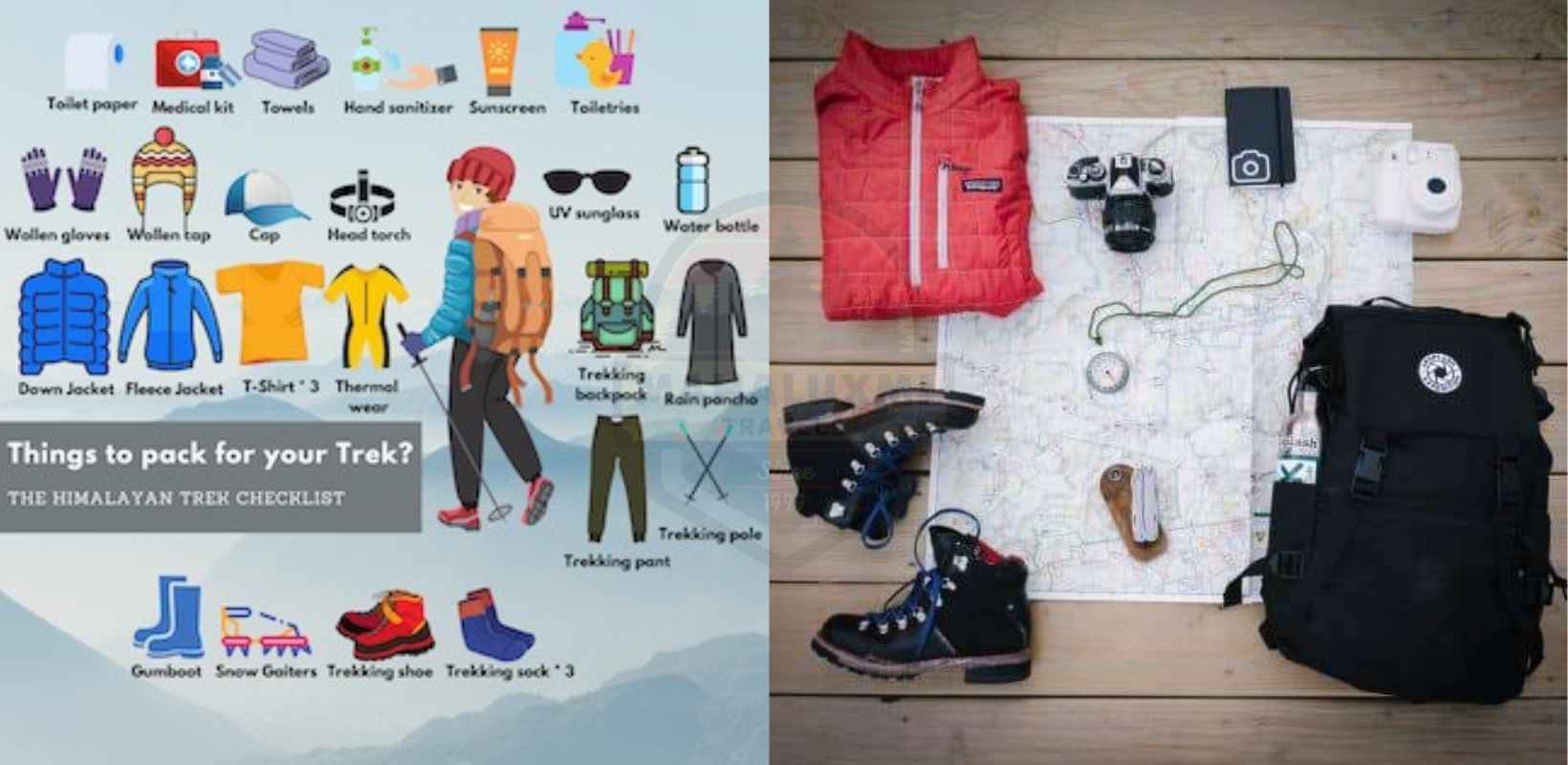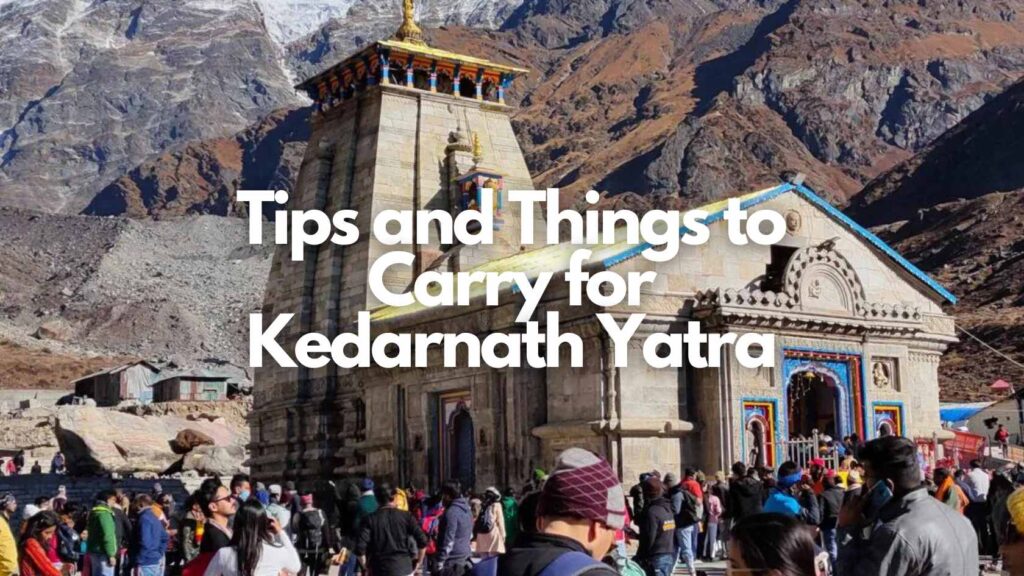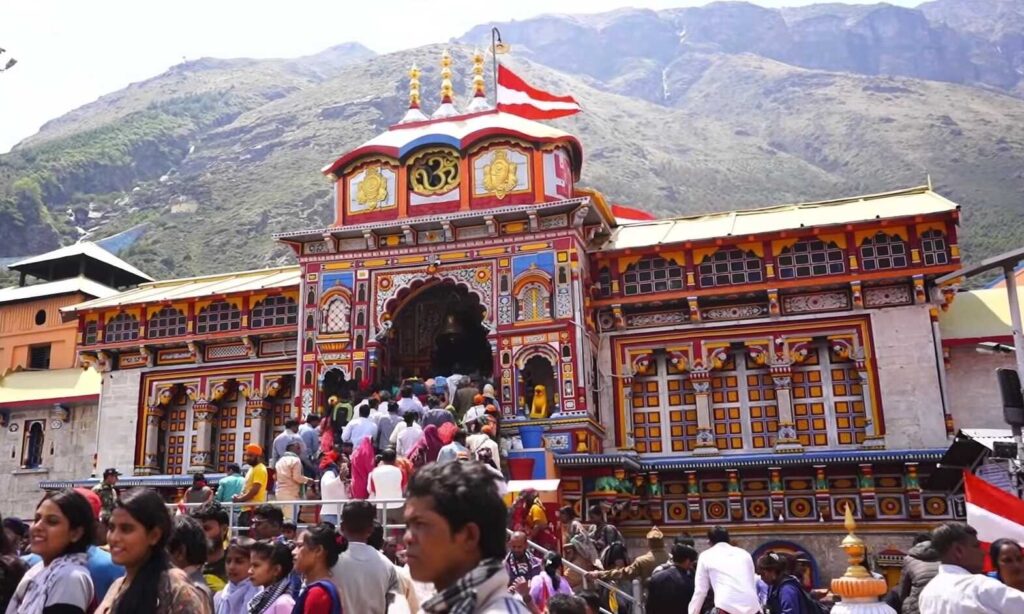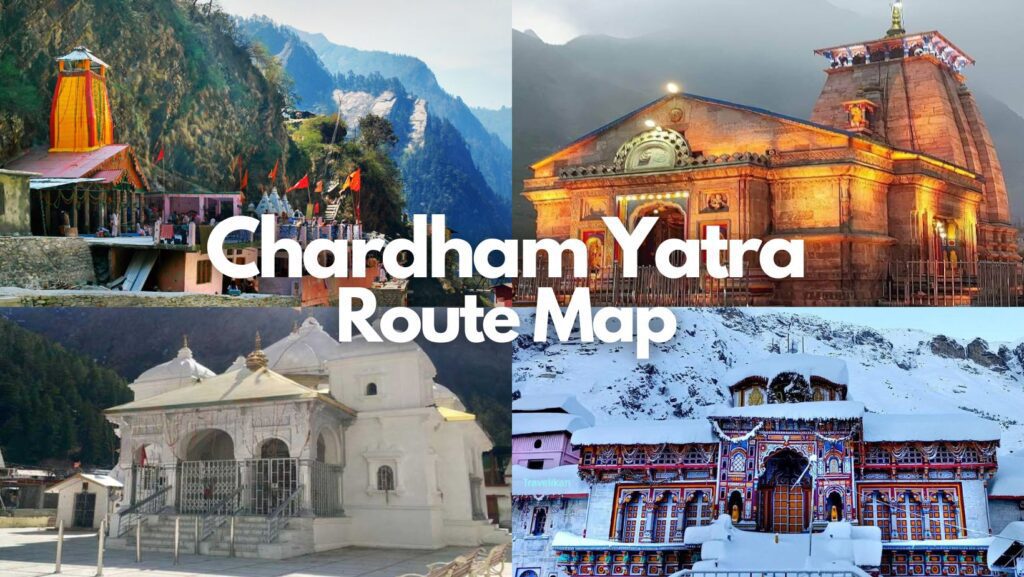Overview
Are you considering a spiritual journey to Kedarnath? Traveling to Kedarnath is an intense and spiritually enriching experience, but it requires careful planning and preparation. In this article “Things to Carry for Kedarnath Trip”, we provide Best tips and guidance to guarantee a safe and worthwhile pilgrimage. Whether you are a first-time pilgrim or a seasoned traveler, these insights will help you maximize the benefits of your Kedarnath trip packing list.

Kedarnath Trekking Items List
- ID card/identity card
- Rucksack/Backpack
- Trekking Shoes
- Trekking Poles
- Headlamp
- Sunglasses
- First Aid Kit
- Rain Gear (Upper and Lower)
- Bag Rain Cover
- Daypack
- Camping Slippers
- Sun Cap
- Woolen Hat
- Leather
- Thermal (upper and lower)
- T-shirt
- Fleece Jacket
- Down Jacket
- Waterproof Gloves
- Track Pants
- Socks(3 Pairs of Socks)
- Water Bottle
- Tiffin Box, Spoon and Mug
- Sunscreen
- Lip Balm
- Personal Hygiene Products
- Camera/Gopro
- N-95 mask and Sanitizer
- Power Bank
- Multi-Tool or Swiss Army Knife
- Maps and Navigation Tools
- Whistle
- Emergency Shelter (Tarp or Space Blanket)
- Insect Repellent

THINGS TO CARRY FOR KEDARNATH Trek: A Brief Description
Certainly, here’s a brief description of Things to Carry for Kedarnath Trip packing checklist:
Basic Gear list for Kedarnath Trekking
1. ID card/identity card
Be sure to carry your ID card and some photocopies. This is mandatory for identification purposes.
2. Rucksack/Backpack
A high-quality backpack is essential for trekkers. Invest in one with a capacity of around 60-70 litres, and make sure it’s waterproof to protect your gear from the elements.
3. Trekking Shoes
Equip yourself with sturdy waterproof trekking shoes that provide excellent ankle support and have sturdy soles to tackle different terrains.
4. Trekking Poles
Trekking poles are invaluable for maintaining stability in rough terrain. They function as extra limbs, aiding balance on bridges, fast-flowing water, ice fields, ice rinks, narrow ridgelines, and uneven ground.
5. Headlamp
A headlamp is a practical option, as it keeps your hands free while providing directed light. This is more convenient than holding the flashlight for a long time.
6. Sunglasses
Sunglasses are essential in sunny places. Protect your eyes from UV radiation, which can be especially intense at high altitudes.
7. First Aid Kit
A comprehensive first aid kit is important. Medicines to carry for kedarnath trip includes knee caps, bandages, pain relievers, antiseptic cream, paracetamol and others for minor injuries, sunburns, blisters, fractures, altitude sickness, muscle strains, cramps, respiratory problems, insect bites, dehydration, stomach aches and fainting. Essential items like medicines should be included.
8. Rain Gear (Upper and Lower)
Waterproof pants and rain jacket are important to stay dry during rainy season on your trek. Keep in mind that windshields are not a substitute for proper rain gear.
9. Bag Rain Cover
If your backpack is not waterproof, consider using a rain cover to protect it from moisture.
10. Daypack
A comfortable and well-fitting daypack is essential for carrying essential items during your trek. Make sure it has enough room for your gear and easy access to water bottles or hydration bladders.
11. Camping Slippers
Though optional, camping slippers can make your camping experience more comfortable and convenient during the trek.

Clothes for Kedarnath trip
12. Sun Cap
Comfortable hat designed for long days in the sun. It also provides protection to your neck, as its side flaps can be removed. Its solid and flexible frame enhances durability.
13. Woolen Hat
Essential to protect your head and face during the trek. It helps protect your skin from direct sunlight, preventing painful sunburns. You can also use a muffler or bandana for added protection.
14. Leather
A lightweight, versatile fabric tube that keeps warm air close to your skin. It can be worn in a variety of ways, including as a scarf, lower face mask, full balaclava, headband or bandana. Buff is suitable for all seasons.
15. Thermal (upper and lower)
High altitude treks require thermal tops made of synthetic fabrics that will not deteriorate due to sweat. They provide essential insulation against cold temperatures.
16. T-shirt
Avoid cotton T-shirts as they are heavy, slow to dry and absorb sweat. Choose synthetic T-shirts that wick moisture away from your skin. Long sleeve T-shirts are ideal for trekking.
17. Fleece Jacket
The wool jacket is excellent for shedding water caused by low temperatures, even if it is not suitable for heavy rain. This is a must for outdoor enthusiasts and hikers.
18. Down Jacket
Down jackets are filled with feathers which provide excellent insulation by trapping your body heat. They are ideal for keeping you warm in cold conditions.
19. Waterproof Gloves
Waterproof trekking gloves that cover your hands up to the wrist are essential to keep your hands dry and warm, especially in rainy or snowy conditions. They help prevent frostbite.
20. Track Pants
Invest in track pants made from quick-drying materials that can be worn even in wet conditions. Avoid jeans, as these are not suitable for trekking.
21. Socks
Always carry three pairs of socks with you on your trek: two pairs for trekking and one pair of warm woolen socks for sleeping. Trekking socks should be synthetic, quick-drying and ideally antimicrobial to ensure comfort and hygiene for both you and your fellow trekkers.
Other Essential Items for Kedarnath Trekking
22. Water Bottle
Hydrate regularly to maintain oxygen levels, especially when you sweat a lot while hiking. Even if you don’t realize it, hiking causes significant water loss.
23. Tiffin Box, Spoon and Mug
For long treks where you need to bring your own food, it is advisable to pack tiffin boxes, spoons and mugs to reduce single-use plastic waste.
24. Sunscreen
Protect your skin from harmful UV rays, which can be especially intense at high altitudes. Apply sunscreen before going out.
25. Lip Balm
Prevent chapped and cracked lips by carrying lip balm to keep your lips soft and healthy while hiking.
26. Personal Hygiene Products
Include a travel toiletry kit with essential items like paper products, dental hygiene items and other personal care items. Avoid bringing scented products on the trek.
27. Camera/Gopro
Although optional, it is highly recommended to bring a camera or GoPro if you want to capture and cherish the memories of your trek.
28. N-95 mask and Sanitizer
Due to the ongoing pandemic, it is important to prioritize hygiene. Carry an N-95 mask and hand sanitizer to protect yourself and the local community while trekking.
29. Power Bank
Although it may be cumbersome, it is advisable to carry a power bank if you want to use your phone during the trek, especially for navigation or emergencies.
Emergency Items for Kedarnath Trekking
30. Multi-Tool or Swiss Army Knife
A versatile tool can be a lifesaver in various situations, from fixing gear to preparing food. A multi-tool or Swiss Army knife with different functions is invaluable on treks.
31. Maps and Navigation Tools
Carry detailed maps of your trekking route and a reliable compass or GPS device to help you stay on track and navigate the terrain effectively.
32. Whistle
A whistle is a simple yet crucial safety item. It can be used to signal for help in emergencies, especially if you’re in a remote area with no cell signal.
33. Emergency Shelter (Tarp or Space Blanket)
An emergency shelter, such as a lightweight tarp or space blanket, can provide essential protection from extreme weather conditions if you’re caught in unexpected situations.
34. Insect Repellent
Depending on your trekking destination, insects can be a nuisance and even carry diseases. Carry insect repellent to protect yourself from bites and discomfort.
Medicines to Carry for Kedarnath Trip
- 6 tablets of Crocin/Paracetamol (for fever)
- 4 tablets of Vomistop (for travel sickness in hilly terrain)
- 4 tablets of Combiflam (pain reliever)
- 10 strips of Band-Aids
- 6 tablets of Digene (for stomach discomfort and digestion)
- 1 small roll of Cotton
- 2-3 packets of ORS or Electral (for dehydration)
- Betadine or antiseptic cream (for minor injuries)
- Move or Volini spray (for strains, joint, and muscle pain)
- Crepe bandage (for strained joints)
Tips for Kedarnath Yatra
Before embarking on the Kedarnath Yatra, thorough preparation is essential. Consider the following key aspects:
Best Time to Visit: The ideal time for the Kedarnath Yatra is during the summer months, from May to June and September to October, when the weather is pleasant. Avoid the monsoon season due to heavy rainfall and landslides.
Weather Conditions and Clothing: Be prepared for unpredictable weather in Kedarnath. Pack layered clothing to accommodate temperature variations and bring raincoats or waterproof jackets for sudden showers.
Fitness and Health Requirements: Since the yatra involves trekking at high altitudes, ensure you are physically fit. Engage in regular exercise and consult your doctor before the journey. Carry essential medications and a first aid kit.
Required Documents and Permits: Make sure you have all necessary documents and permits. Carry a valid photo ID like Aadhaar Card or Passport for identification and obtain the required permits, such as the Char Dham Yatra permit, from the relevant authorities.
Choosing the Route for Kedarnath Yatra
When selecting your route for the Kedarnath Yatra, consider the following factors:
Available Routes: The Kedarnath Yatra provides two main routes: the traditional trekking route from Gaurikund and the newer motorable route from Sonprayag. Each route comes with its own advantages and challenges, so pick the one that best suits your preferences and physical capabilities.
Accessibility Options: If you have limited mobility or health concerns, there are helicopter services available from locations like Phata and Guptkashi. These services offer a convenient and time-saving alternative to trekking.
Pros and Cons of Each Route: The traditional trekking route from Gaurikund offers a picturesque and immersive experience, allowing you to fully appreciate the natural beauty of the region. Conversely, the motorable route from Sonprayag is more accessible and less physically demanding. Make your choice based on your personal preferences and physical condition.
Accommodation Options
During your Kedarnath trip, you will find a variety of accommodation options to suit different budgets and preferences. Here are some ideas:
Type of housing:
Around the Kedarnath temple, you will find guesthouses, ashrams and hotels that cater to a variety of budgets and preferences. Whether you’re looking for budget-friendly options or a more luxurious stay, there’s something to suit every pilgrim’s needs. The most popular accommodation options are located in Gaurikund, Sonprayag and Kedarnath.
Popular guesthouses and hotels:
Some of the notable guesthouses and hotels near Kedarnath Temple include Bharat Sevashram Sangh, Punjab Sindh Accommodation and GMVN Tourist Rest House. These establishments provide basic amenities and offer comfortable stay to the pilgrims, enhancing the overall experience of your spiritual journey.
Booking Options
To secure a suitable place to stay, it is highly advisable to book your accommodation well in advance, especially during peak season. Many guesthouses and hotels offer online booking, while others offer the option of on-the-spot booking. I recommend you to Book your Kedarnath Yatra Package by Travel agency in Haridwar for your Comfortable Yatra. Travel agency arrange everything for you in Advance. Visit Mahaluxmi Travels one of the Best Travel agency in Haridwar.
Conclusion:
In conclusion, Kedarnath Yatra is a spiritually enriching journey that demands careful planning and preparation. By keeping in mind factors like weather conditions, route selection, packing essentials, safety precautions and temple customs, you can ensure that your Kedarnath trip is a memorable and spiritually gratifying experience.
Plan your trip to Kedarnath with the tips given in this article and embark on a transformative journey to the holy abode of Lord Shiva.
Frequently Asked Questions (FAQs)
Carry a valid government ID, travel permits (if needed), and hotel reservations.
Pack according to the season: light clothing and rain gear in summer, waterproof clothing and sturdy boots in monsoon, heavy woolens and snow gear in winter.
Acclimatize, stay hydrated, and carry Diamox for altitude sickness prevention if advised.
Pack basic first-aid items, prescription meds, altitude sickness meds, and insect repellent.
Use BSNL or Airtel SIM cards or Jio Sim, download offline maps, and consider renting a satellite phone.
Dress modestly, remove shoes at temples, ask before photographing locals, and dispose of trash responsibly.
You can reach Kedarnath by road up to Gaurikund and then go trekking or hire a local horse or palanquin. Helicopter services are also available during the pilgrimage season.
No, it’s not safe to drink untreated water. Carry a water purifier or buy bottled water to avoid waterborne illnesses.
The temple has specific opening and closing timings. Generally, it’s open from early morning to late afternoon, with a break in between. Check the current schedule before your visit.
Save these important numbers:
Kedarnath Police Station: [094111 12611]
Medical Emergency: [0135 – 1364]
Disaster Management Helpline: [0135-2710334]
Having these contacts on hand can be helpful in case of emergencies during your trip to Kedarnath.






